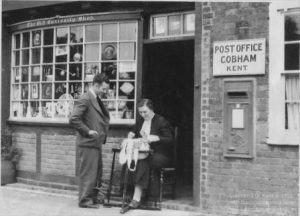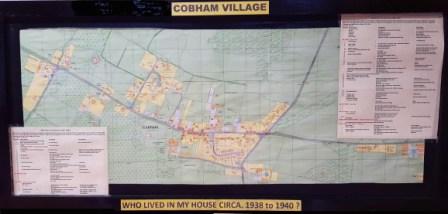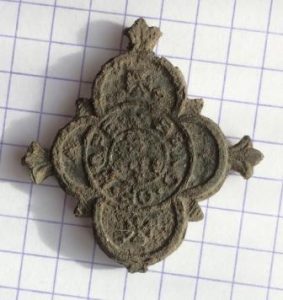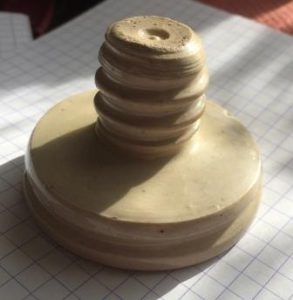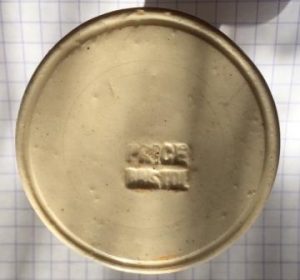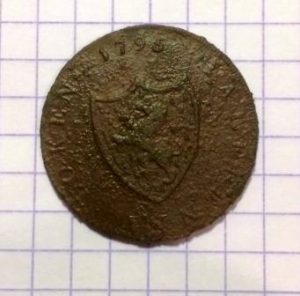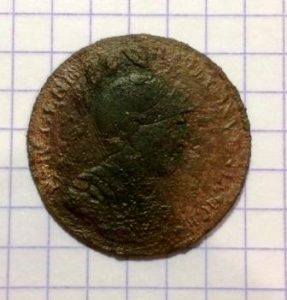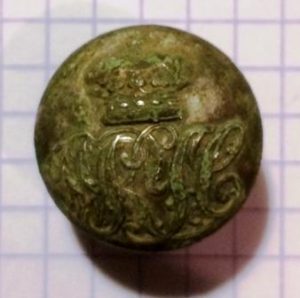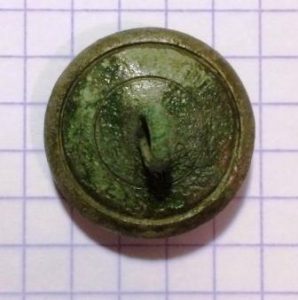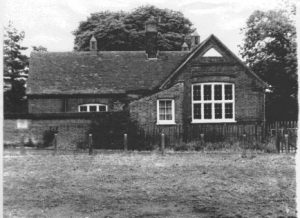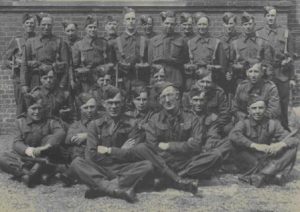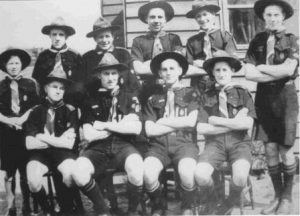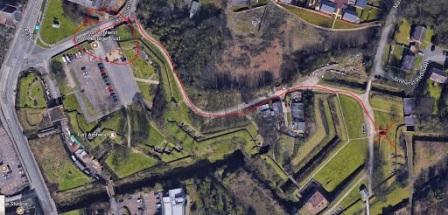Betty Bicker-Robinson (nee King) was a young girl when she moved to Cobham in 1938 but has managed to recall, not only a vast majority of the occupants but also occupations of people who lived in the village at that time. Many thanks to Betty for all the work that she has put into compiling the following list of people who lived in Cobham from 1938-1940.
| HOUSE NO. | HOUSE NAME | OCCUPANTS | NOTES |
| The Street (South side) | |||
| 1 to 7 | n/a | n/a | Properties built since 1940 |
| 9 | Robins Wood (opposite The Ship) | Mr & Mrs Butler | Vicar of Cobham Church |
| 11 to 19 | n/a | n/a | Properties built since 1940 |
| Sunalta | Tom & Nan Wilson | n/a | |
| (Lawrence Drive not built at this time) | |||
| The Exchange | n/a | n/a | |
| 21 | The Mill Café tea rooms (The Granary House) | Mr & Mrs Bean | Upstairs room for weddings and magic lanterns |
| 23 | The Bakery | Mr & Mrs Bean | Bakers was a building at the back of no. 23 |
| 25 | n/a | Mrs Robinson | Cobham Hall washing in garden shed |
| 27 | n/a | Mr & Mrs Sanderson & daughters Iris & Doreen | n/a |
| 29 | The Murrells | Lou & Betty Ingram | Groom for Jacksons Farm |
| 31 | n/a | Mr & Mrs Lovelace & children Robert & ? | n/a |
| 33 | The White House | Mrs Haig | n/a |
| 35 | n/a | Mr & Mrs Mayhew & daughter Phyllis | n/a |
| 37 | n/a | Occupants unknown | n/a |
| 39 | The Old Curiosity Shop | Mrs Hoppe | Lacemaker |
| 41 | n/a | Ernie & Mrs Wooddridge & son Ernie | n/a |
| 43 | n/a | This cottage was let to woodmen who were not permanent tenants | n/a |
| 45 | Little Dortitt Café | Mr & Mrs Wood & daughter Doris | Café owners |
| 47 | n/a | Occupants unknown | n/a |
| 49 | Through the gate and behind the café | Doctor Hasler | Doctor’s surgery |
| 51 | n/a | Mr & Mrs Sharman | n/a |
| 53 | n/a | Alexander (aka Harry) & Lilian Carson-Tate | Army Despatch Rider |
| Stonehouse Yard | |||
| 55 | n/a | George Mungeum | n/a |
| 57 | n/a | Mr & Mrs Wickens & children Evan & Doreen | n/a |
| 59 | n/a | Miss Alice Wiffen | n/a |
| 61 | n/a | Mrs Shiregold and daughters Jessie & Connie | n/a |
| 63 | n/a | Mr Lusher | n/a |
| The Street (South side continued) | |||
| The Old Parsonage | n/a | n/a | |
| 1 | The Terrace | George & Mrs Ford & son George | George worked on English’s farm |
| 2 | The Terrace | Mrs Box & son | Son worked in the Rectory |
| 3 | The Terrace | Len & Joyce Barden & sons Leonard, David & Colin | Len worked on English’s farm |
| 4 | The Terrace | Mrs Austen | n/a |
| 1 | Parsonage Cottage | Les & Joyce Twitchett & 3 sons & a daughter | Both worked on English’s farm |
| 2 | Parsonage Cottage | David & Nina Harris | Both worked on English’s farm |
| Parsonage Farm | Mr & Mrs English & son Mark | Farm owners | |
| Parsonage Farm | Mr Rye | Farm foreman | |
| Halfpence Lane | |||
| Halfpenny House | George Beech | Police Sergeant | |
| The Firs | n/a | A council store shed was here at the time | |
| Meadmore | Mr Gates | Ex Headmaster of Cobham Primary school | |
| Homelea | George and Mrs Skinner | Bus Inspector | |
| Ashdown | Mr & Mrs Alice Horton | School Mistress | |
| Rose Cottage | Jack & Mrs Walker and children Ted, Jack, Joan (twins) Isobel & May | Jack played cricket for Kent | |
| The Street (North side) | |||
| 6 | Forge Cottage | Mrs Nan Pierce (Nee Wood – sister of the Wood brothers) | n/a |
| 8 | Forge Cottage | Mr & Mrs Arthur Wood (aka Sid);Mr & Mrs Frank Wood | Owned and worked in the forge |
| 10 | Mill Farm House | Archie & Mrs Morris | Dealt with milk (probably at the depot) |
| 12 | n/a | n/a | Property built since 1940; A rose garden at the time |
| 14 | The Ship Inn | Tom Trent | Licensee of The Ship Inn |
| 16 | n/a | Mr & Mrs Lusher | Mrs Lusher was school caretaker |
| 18 | Cobham school buildings | Horace Burrow | Headmaster – taught senior pupils |
| 20 | n/a | Mr & Mrs Broad & daughter Mary | n/a |
| 22 | n/a | Mrs Street | n/a |
| 22 | n/a | George Mungeum (aka the old man) | Had a rose garden |
| 24 | n/a | Mr & Mrs Spells | Village policeman |
| 26 | n/a | Mr & Mrs Hawkes & children Rosemary & Jack | n/a |
| 28 | One up, one down, at rear of Wisteria Cottage | Miss Backhouse | Nurse |
| 30 | Wisteria Cottage | George & Mrs Morris & children George & Violet | Son cycled deliveries for Gander’s shop, daughter looked after retired parents |
| 7 (old numbering) | n/a | Mrs Emma King & daughter Betty (youngest of 10) | Now demolished |
| 6 (old numbering) | n/a | Miss Dol Russell | Worked in Mrs Rose’s guest house; Now demolished |
| 5 (old numbering) | n/a | Mrs Downe & son Jack | Now demolished |
| 4 (old numbering) | n/a | Mrs Emily Knight & children Kenneth, Doris & Rene | Now demolished |
| 32 | n/a | n/a | This was the store room for George Ganders shop at the time |
| 34 | n/a | n/a | Propery built since 1940 |
| 36 | n/a | n/a | This was not a separate address at the time |
| 38 | Gander’s shop | George & Mrs Gander & sons Jack & Eric | General stores |
| 40 | The Darnley Arms | Mrs James & daughters Betty & Kay | Licencee of The Darnley Arms |
| 42 | n/a | Occupant unknown | n/a |
| 44 | n/a | Bill Fenner | Played the trumpet in Ivy Benson Band |
| 46 | Mr Fenner (Bill’s brother) | n/a | n/a |
| 48 | Bert & Ciss Baker & children Bert, Peggy & Jean | Sweet shop owners | |
| 50 | n/a | Ted & Mrs Ralph & children David, Leonard, Colin, Pauline & Terence | Owners of coal business |
| 52 | n/a | Miss Doris Usher | Turned her front room into a café in WW11 |
| 54 | The Leather Bottle | n/a | n/a |
| 56 | n/a | The staff from the Leather Bottle | n/a |
| 58 | 2 Crokers Place | Doctor & Mrs Horron | Ships Doctor? |
| 60 | 1 Crokers Place | Occupants unknown | n/a |
| Meadow House | Mr Arnold | (may have been an artist) | |
| 2 Meadow Cottages | The four Parker sisters | n/a | |
| 1 Meadow Cottage | Laurie Austin; George & Mrs Ford & son George | Verger; George worked on English’s farm | |
| Battle Street (East side) | |||
| 3 | n/a | Mr & Mrs Sands & daughters Sheila & Jean | n/a |
| 4 | n/a | Mr & Mrs Beckham & sons Ronald, Albert, Norman & Leslie | n/a |
| 7 | n/a | Mr & Mrs Day | n/a |
| 8 | n/a | Mr & Mrs Barden & sons David, Leonard & Colin | n/a |
| Battle Street (West side) | |||
| n/a | Two Oast Houses | Bill & Rose Dray & children Peggy & Teddy | Were Oast Houses for Pyes Farm at the time |
| 1 & 2 | n/a | Mr & Mrs Austen & sons Oscar & Tom | Worked on Pyes farm now Jeskyns |
| n/a | Holly Lodge | Mrs Brady | n/a |
| Battle Street (North end, before Sarcen Close was built) | |||
| 5 | n/a | Laurie & Joyce Austen & 2 daughters | n/a |
| The Street (North side continued) | |||
| Green Hedges | Miss Grace Wood | Church organist | |
| 1 | Owletts Cottages | Mr & Mrs Allen & son (? name) | Both worked in George Gander’s shop |
| 2 | Owletts Cottages | Miss Finlay | Sunday school teacher |
| 4 | Owletts Cottages | Fred & Phyllis Jones & daughters Phyllis & Anne | Cattleman |
| 5 | Owletts Cottages | Miss Violet Barron | n/a |

